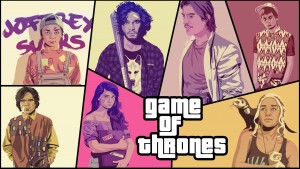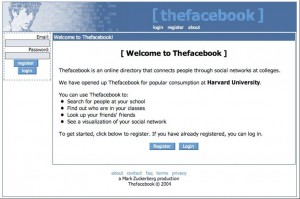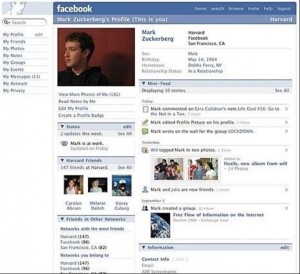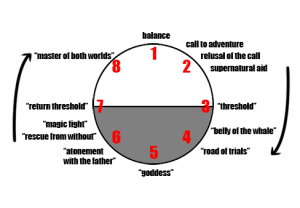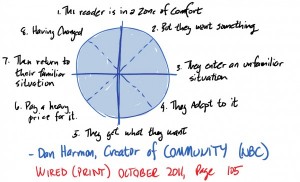Nerves. A whole lot of them. When I think back to my first week, that is what I remember the first. Having had a year off from school, practically doing nothing apart from watching television and movies and working, the thought of getting back into a routine and applying myself to new sort of schooling was daunting to me. Having created a nice and comfortable nest around myself for sixteen months, when the first tutorial began on Monday the 2nd of March I was relieved to be surrounded by people who shared my interests. The conversation flowed easily, the nerves most people were feeling began to fade away as we discussed everything we loved about media and found a lot of common ground. I have learned more than I ever thought I would during this past semester about media. Coming into this program, my main driving force was that all I am passionate about are television shows and movies and while this semester has cemented this further in place, the knowledge I have gathered about the construction and creation of media is amazing, and we have only scratched the surface. Having begun my journey of breaking out of my “comfort nest” I am extremely excited about what lies ahead and very thankful for all I have learned so far this year.
Below is the learning graph I completed in my tutorial during week twelve. I approached filling this out by basing it on what I learned week to week. The first half of the semester brought an avalanche of new information on everything from media production to collaboration and that is why the yellow line has a sharp incline from week one. The black line dips during the first two weeks as my time away from any schooling environment had made me lazy and Project Brief 1 was the wake up call I needed to get my motivation. It begins to decline towards the end of the semester, not because I was forgetting how to work independently, but because I was working in a group and learning how to contribute to a collaborative project.
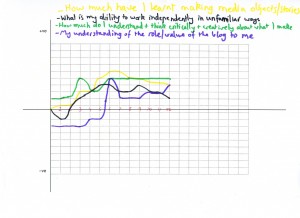
I am not someone who likes reflecting on who I am as a person. I somewhat struggled to define myself during Project Briefs 1 and 2 because of this. Yet I feel these following posts best demonstrate how I engaged with the Media 1 course.
My Reflection on Project Brief 1 – This post reveals my thought process on presenting my collection of media artefacts to the class. This demonstrates how I approached creating my first project for Media 1 and my apprehension of presenting it to the class. As the semester continued, these feeling dissipated as I discovered how deeply helpful my peers’ feedback was to me. If you would like to see the the media artefacts I created, here is a supplementary link to Project Brief 1.
Crossroads – Project Brief 2 built upon my initial collection of media as we were asked to turn it into a one minute film. This post showcases how I have begun to critically evaluate my work and apply the feedback I received from the first project to this self portrait.
Week 3 Lectorial Reflection – This is the first instance of me understanding the nature of the lectorials and approaching them in conjunction with the week’s readings and applying the new information to my own life. While creating Project Brief 3 and 4, I returned to my notes on this lectorial consistently to ensure I was respecting the participants and working well within a team.
Evolution of Social Media Institutions – This post was in response to the week ten lectorial on institutions. I went into that session with a lukewarm attitude, as I prefer creating and consuming media to studying and informing myself on the institutions that run the business side of media. Yet this post was spurned by the lecture as I wanted to share my views on how some institutions have managed to stay relevant in an age of constant evolution and change.
Keegan Mew: Behind the Fringe – This post contains Project Brief 3 and my reflection on its creation and the feedback I received during my tutorial. I am very proud of this project as I believe I captured Keegan’s personality extremely well and produced a quality artefact. This post and the reflection showcases how I applied what I had learned throughout the semester to my work while also revealing how I have evolved in evaluating my own work and considering the feedback I receive from outside sources.
A Final Reflection
What Have I Learned? First and foremost I learned to have more confidence in the media I create and to not be afraid of evaluation and feedback from my peers. They are a unique and irreplaceable resource which I will need to take full advantage of if I am to succeed in the media industry. Project Brief 4 taught me a lot about collaboration in media. Working with Aidan and Cheyenne to create something I had never attempted before, a series of short podcasts, opened my eyes to the strengths and weaknesses of working within a group. Throughout the semester I repeatedly learned that university and working in the media industry requires a strict form of time management and organisational skills.
How Did I Learn? I have always relied on the people around me for inspiration and advice and this semester was no different. Meeting new people and forging new friendships allowed me to turn to my peers and ask them to help explain a concept I did not understand or provide feedback on a draft of a project I was working on. Because this course is centred on the thing I am most passionate about, I was more motivated to attend lectures and take notes to help reinforce what was being discussed. By applying these to the creation of media artefacts, they were given context instead of just being theories that had been talked about and forgotten. This hands on experience helped me to understand more facets of the ideas I had learned about in class than any further literature research would have.
What Did I Find The Most Challenging In This Course? One of the more challenging aspects of the course was its independent nature. Even with a gap year, transitioning from a high school learning environment to university presented me with a lot more freedom than I was used to. For the first time, my education depended on me and the guidelines for assessment tasks were much broader. Project Brief 4 was especially challenging in this regard as I was so used to following strict guidelines for major projects that trying to create a media artefact that responded to the concept of ‘mediums’ without any additional instructions was an obstacle that I had to work hard to overcome.
What Did I Discover About My Own Creative Practice? Presenting Project Brief 1 to my peers revealed to me that I can create something worthwhile and I should create content that appeals to myself and not what I think people will like. I have created false expectations from my peers and burdened myself with them and during this semester I discovered that what appeals to audiences the most is personality. While creating my own self-portrait and my portrait on my friend Keegan, it occurred to me that I tend to create a narrative through my work. This is an exciting revelation as I can begin a new project and no matter how difficult it seems from the outset, I can create a narrative around it and build the artefact around its personal story.

